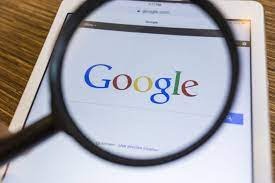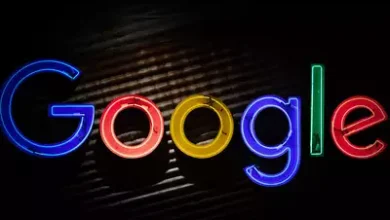From now on, nobody will be able to trick you with a picture, Google releases an image fact-checking tool
The digital giant Google has made a big contribution to the fight against false news and disinformation in the globe. They have unveiled a revolutionary technology called “Picture Fact Check.” Through the assistance of this cutting-edge technology, people will be empowered to confirm the legitimacy of photographs and photos they come across on the internet. Let’s examine this revolutionary discovery in more detail.
Revealing the Image Fact Check
Google has always been at the forefront of the fight against false information, and Picture Fact Check is just one more tool in their toolbox. With the use of this instrument, the public will no longer be misled or manipulated by the proliferation of misleading visuals. The need for tools like Picture Fact Check has never been greater as the digital world becomes more intricate.
The Importance of Image Validation
With a variety of editing tools, photographs and photos may be quickly altered in the modern digital era. Because of this, erroneous or misleading visual information often appears online. Picture Fact Check is useful in this situation. Because of the widespread usage of deepfake technology and the abundance of user-generated material on social media platforms, there is an increasing demand for picture verification. People are continuously exposed to pictures, and it’s not always clear how to tell the difference between real and artificial ones.
How Is It Operated?
Picture Fact Check does a reverse image search using sophisticated algorithms. The program allows users to upload a picture or enter its URL, and it will search the internet for related or similar photos. This procedure aids users in determining the legitimacy and origin of the disputed picture. Reverse image search technology makes use of an extensive picture database to determine if a certain image has already been posted online. Picture Fact Check may draw attention to issues such as the image’s various source affiliations or any indications of alteration. This approach is particularly useful in detecting cases in which photos are extracted from their original context and used to bolster misleading claims.
Exposing False Information
In the digital era, misinformation is a major issue, and misleading narratives are often supported by misleading visuals. By enabling viewers to learn the real story behind these photos, Picture Fact Check encourages accuracy and openness. This technique is essential for uncovering and dispelling false information since it enables people to confirm the legitimacy of photographs. It’s important to remember that pictures have a powerful emotional impact and may shape public perception. Strong emotions may be evoked by a picture that becomes viral, which happens often. On the other hand, it may cause widespread confusion or even unrest if that image is misrepresented or artificially altered. Picture Fact Check makes sure that the feelings and thoughts these kinds of pictures arouse are founded on factual knowledge.
An easy-to-use interface
Google’s dedication to ease of use is apparent in the way Picture Fact Check is designed. Anyone may easily utilize the tool’s basic and straightforward UI. Advanced technical knowledge is not required for users to explore and use the program. This accessibility is essential since it guarantees that a large group of individuals may take use of the service, irrespective of their level of technical skill. The user interface walks users through starting a search, uploading an image or entering a URL, and analyzing the results. It is intended to be user-friendly and educational, giving consumers the knowledge they need to make wise decisions about the pictures they come across on the internet.
Remaining One Step Forward
Google has always made it a priority to lead the IT sector. With the launch of Picture Fact Check, they have once again shown their dedication to innovation and taking on modern problems. Staying ahead of the curve is essential in the fast-paced world of technology, and Google has shown this by being proactive in addressing emerging concerns via their ongoing efforts to fight disinformation. The creation of resources such as Picture Fact Check is also consistent with Google’s overarching goal of enhancing user safety and dependability on the internet. The firm is presenting itself as a responsible and reliable provider of information and services by taking the lead in tackling the issues of the digital era.
Effects on Internet Trust
Trust in internet material has been damaged by the spread of false information. Google is demonstrating its commitment to accuracy and reliability by providing users with an option to confirm the photos they come across. Picture Fact Check has important consequences for internet trust. Users may approach internet information with increased confidence as they get the ability to independently confirm the veracity of the visuals they view. There are detrimental effects on society when people lose faith in digital material. People who have doubts about the veracity of information tend to become more divisive, conspiracy theories proliferate, and even create rifts in society. Google’s efforts to tackle this problem with resources like Picture Fact Check are helping to rebuild public confidence in online sources of information.
A worldwide endeavor
False information has no geographical restrictions, and Google’s Picture Fact Check feature is accessible anywhere. This highlights the tech company’s worldwide obligation to stop the spread of misleading information. The tool’s worldwide accessibility highlights how crucial it is to combat disinformation as a team effort. False information and altered photos have the power to spread quickly across national boundaries and linguistic barriers. For this reason, it is essential that people everywhere have access to resources like Picture Fact Check. Google’s dedication to worldwide accessibility is consistent with the digital age’s interconnectedness, where information can readily traverse national boundaries.
Advantages for Writers
Since journalists are often the first to verify information, they stand to gain a great deal from this instrument. It simplifies the procedure for approving photos for news articles. Journalists are under tremendous pressure to provide accurate and timely information in an age when news travels quickly thanks to internet platforms. By streamlining the process of picture verification, Picture Fact Check frees up journalists to concentrate on their main duty: reporting the news. Images are a common tool used by journalists to tell stories and provide context. They may make sure the photos they use are authentic and fairly depict the events they are covering by using Picture Fact Check. As a result, news organizations gain more trust and are better able to stop the spread of misleading information.
Possibilities with Social Media
Picture Fact Check may be incorporated into social media platforms, which are a major source of information distribution in this day and age, to stop the proliferation of fraudulent pictures. There is no denying social media’s impact on information sharing and public opinion. For many individuals, social media sites like Facebook, Instagram, and Twitter have become important sources of news and information. Including Picture Fact Check in social media platforms may be an effective way to discourage people from uploading photos that have been altered or falsified. For instance, the platform may provide a warning or offer further details to a user who tries to post a picture that Picture Fact Check has identified as deceptive. The influence of fraudulent photos on social media might be greatly diminished with this sort of integration.
The Conflict With Deepfakes
The technology known as deepfake has made it more difficult to distinguish between genuine and fake. An invaluable tool in the battle against deepfakes is Picture Fact Check. Artificial intelligence is used in deepfake photos and videos to produce very realistic but wholly fake material. There’s increasing worry about deepfakes’ ability to influence public opinion and mislead the public. The ability to verify images using Picture Fact Check may be quite helpful in spotting deepfakes. The application assists users in identifying modified information by comparing deepfake photos with verified real sources. In order to combat the danger presented by deepfake technology, this is a crucial step.
Privacy Issues
Picture Fact Check is an effective tool, however user privacy is a worry. Google has to make sure that user data is handled securely and with the highest care. The privacy problem is raised whenever people engage with internet tools and services. Customers want to know that their personal information and data are secure. It is Google’s duty to ensure that Picture Fact Check operates with robust privacy controls. This entails protecting photos and search data uploaded by users, making sure that this data isn’t used for improper reasons, and being open and honest about data management procedures.
Teaching the People
The introduction of this instrument is just a portion of the answer. It is equally crucial to educate the public on how to utilize Picture Fact Check properly. A tool is only useful when it is utilized properly, and users need to be aware of both its advantages and disadvantages. Google need to spend money on tools and educational initiatives to teach people how to use Picture Fact Check. This involves instructing users on how to submit photos, evaluate search engine results, and determine the legitimacy of photos. In order to ensure that Picture Fact Check achieves its full potential in combatting disinformation, education is an essential component.
An Combined Attempt
It need cooperation from tech firms, governments, and the general people to combat disinformation. Though useful, Google’s technology is not a panacea and cannot address the issue on its own. The complex problem of disinformation requires a concerted response. To counteract disinformation, tech giants like Google need to collaborate to create industry standards and best practices. Governments may enforce regulations to guarantee that issues about privacy and disinformation are properly handled. The people may also contribute by properly utilizing resources like Picture Fact Check and by making governments and internet firms responsible for their deeds.
The Continual Struggle
The war against false information is not over and will continue to change. While Picture Fact Check is an important step forward, it is just one component of the problem. With the emergence of new strategies and technology, the disinformation environment is ever-changing. Google and other digital businesses must keep coming up with new ideas and adapting to remain ahead in this war. In order to successfully combat misinformation, Picture Fact Check will need to be updated and improved on a regular basis. Collaboration with other stakeholders will also be required. Google’s Picture Fact Check launch is a big step forward in the fight against false information on the internet. By giving people the ability to confirm the legitimacy of photos they come across, this technology encourages openness and reliability in the digital era. The public’s access to accurate and trustworthy information is becoming more and more dependent on tools like Picture Fact Check as technology develops and the digital world becomes more complicated. In a society where it is simple to change photographs and exploit them to promote misleading stories, Picture Fact Check is an invaluable tool for users, reporters, and social media companies. But it’s important to keep in mind that the battle against false information is never-ending and calls for cooperation from all facets of society. Together, with resources like Picture Fact Check and a dedication to privacy and openness, we can create a digital environment where people can make informed decisions and trusting sources.







